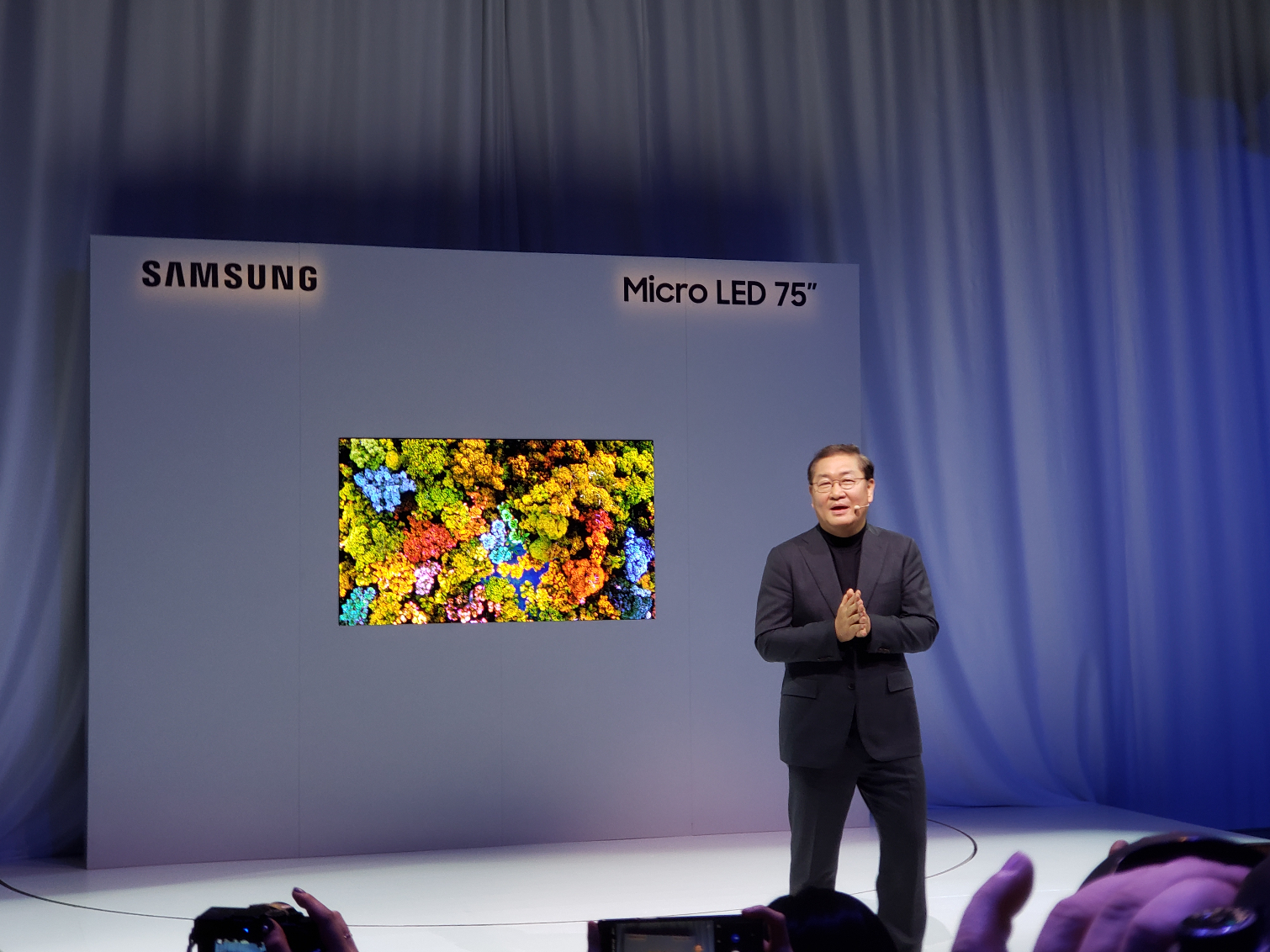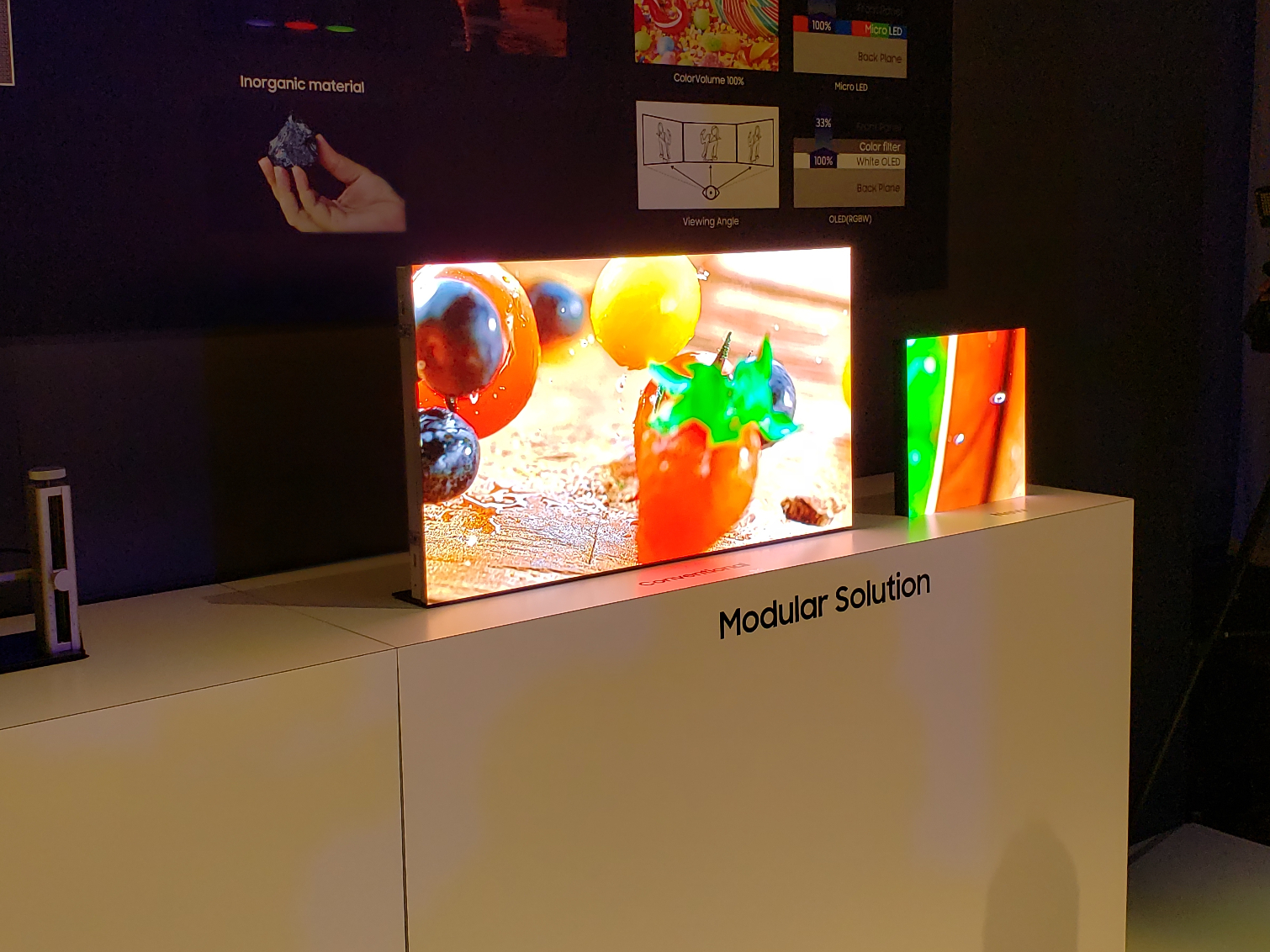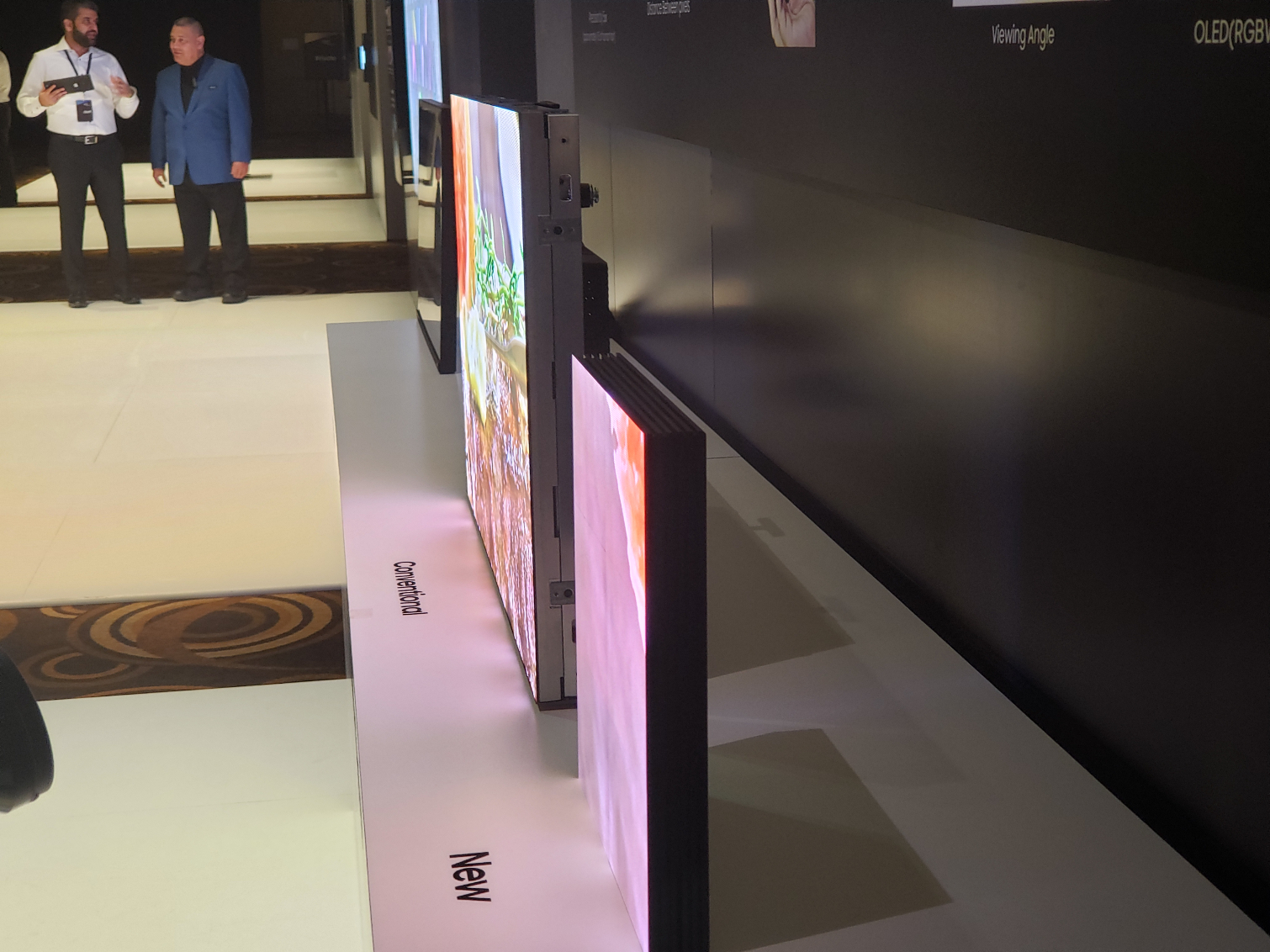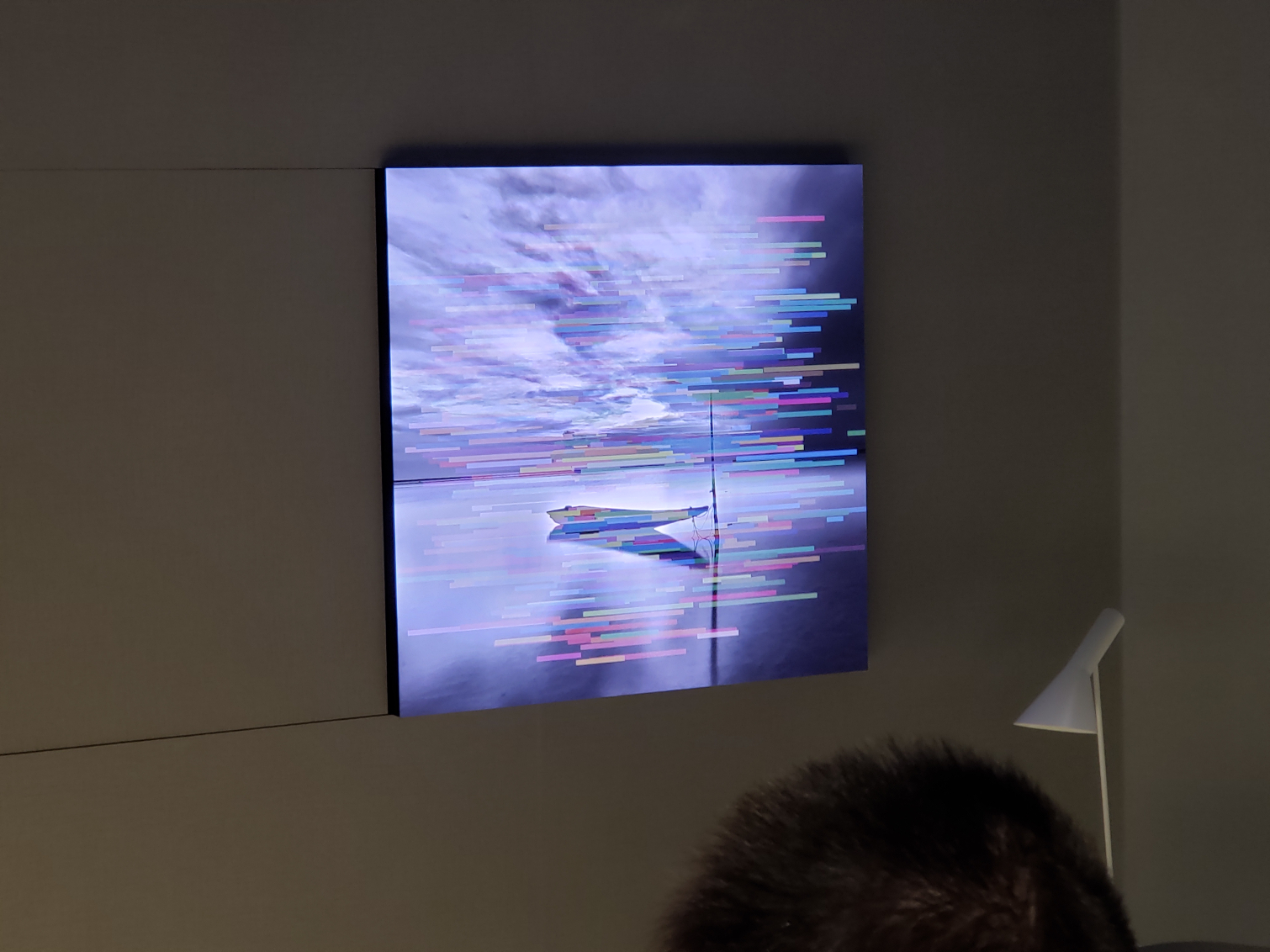Samsung's Modular MicroLED Window Feels Like the Future of TV
Samsung's new microLED technology will let consumers configure their TV to any size or aspect ratio.
Samsung wants to make the TV personal. Really personal. The giant TV manufacturer is offering a level of customization unseen on a consumer TV before with a tile-based MicroLED display that can be configured to any size or aspect ratio. At CES 2019, we got a close up look at what may be the future of in-home TV.
Editor's Note: Samsung's MicroLED TV "The Wall" is available for purchase now, provided you have several thousand dollars to pay for it.

The Window is the 75-inch little brother of The Wall, Samsung's aptly-named wall-sized home theater display. When assembled in a standard 75-inch size with 16:9 resolution, it offers a pretty normal TV viewing experience. But thanks to a design made up of dozens of modular tiles, you can reconfigure the TV several other ways.
The Window's modular design is a refined version of the tiled design seen last year on the giant microLED TV that Samsung called "The Wall". This year's smaller model, the 75-inch version is called The Window. It uses the same tiled design, promising a TV that can adapt to unusual demands.

Got a small kitchen? Use a few tiles for a tiny counter-top display. Got a long wall? Stretch the TV out, making a long rectangular display. You set it up, and Samsung's combination of hardware and software make it work.
With the physical design of The Window promising near endless potential configurations, the software support has to be just as flexible. Samsung claims that the TV includes video processing that will not only scale all of your video content to the appropriate resolution and size of display, it will also give you options for aspect ratios that either fit the content to the screen, or provide the original aspect ratio in whatever available space is provided.

Samsung claims that this goes way beyond basic 16:9 or 21:9 widescreen aspect ratios, but specifies more extreme options, like 32:9, or even 1:1. In Samsung's pre-CES demonstration, we saw everything from square shapes to long oblong rows of tile modules that might be a better fit on a column or countertop backsplash than on your living room wall.
The software side of The Window also opens up the opportunity to view several video feeds side by side, or used in a Mosaic Mode that lets you put several windowed videos in whatever the space of the screen will allow.

While some of these capabilities seem far better suited to commercial signage and CES demo booths, there's no denying that Samsung is giving consumers the most control over their display of any TV manufacturer in the past. The biggest question for most readers will probably be "Will I ever use that?" On that, we'll just have to wait and see.
- LG Unveils 88-inch 8K TV That Doubles as a Giant Speaker
- CES TV Rumor Roundup - LG Rollable, Samsung Micro LED a...
- 8K TVs Are Here Already: What You Need to Know
Get instant access to breaking news, the hottest reviews, great deals and helpful tips.
Brian Westover is currently Lead Analyst, PCs and Hardware at PCMag. Until recently, however, he was Senior Editor at Tom's Guide, where he led the site's TV coverage for several years, reviewing scores of sets and writing about everything from 8K to HDR to HDMI 2.1. He also put his computing knowledge to good use by reviewing many PCs and Mac devices, and also led our router and home networking coverage. Prior to joining Tom's Guide, he wrote for TopTenReviews and PCMag.

